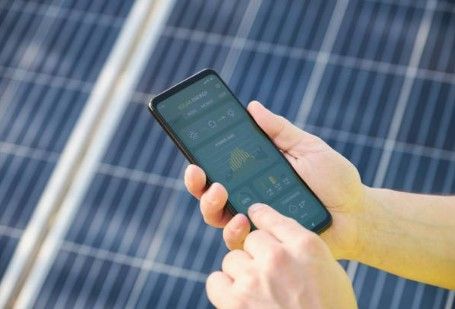How to Monitor Your Solar Energy System’s Performance
Working with solar resident companies assists home owners in cutting energy costs and lessening reliance on traditional power sources. But how do you know if your solar energy system is performing as expected?
Tracking the output of your panel system helps you spot problems early and keep your setup running efficiently. This guide breaks down how to check your solar PV system’s performance, optimize usage, and maintain peak efficiency.
Key Takeaways:
- Regular monitoring helps detect issues early and maintain peak photovoltaic efficiency.
- Using apps, meters, and monitoring systems guarantees accurate tracking of energy production.
- Tracking performance maximizes savings, extends panel lifespan, and supports sustainability.
Important KPIs for PV Power Efficiency
Tracking the right metrics maintains an efficient panel installation. Monitoring these key performance indicators assesses output, setup reliability, and long-term productivity.
- Power Output: Measures how much electricity your solar system generates. Consistent output means your residential or commercial solar panels perform well. Any unexpected drop may indicate maintenance needs.
- Peak Sun Hours: Refer to the number of hours per day when sunlight conditions are ideal for generating electricity. This determines if trees, buildings, or other factors reduce sunlight exposure.
- Efficiency Rate: Shows how much of the sunlight hitting your panels is converted into usable electricity. High efficiency rate (over 20%) means your solar energy solutions work effectively, while a decline may signal cell degradation or dirt buildup.
- Degradation Rate: Panels naturally lose efficiency over time. This metric tracks the extent to which functionality declines each year so that you can plan for future solar panel installation projects or setup upgrades.
- System Uptime: Represents the total time your clean solar power system operates without interruptions. A well-maintained setup with minimal downtime confirms consistent energy independence and reliable backup power.
Regularly reviewing these KPIs guarantees your solar installation remains effective for a sustainable future. A trusted solar panel installation company can provide expert guidance on maximizing efficiency and maintaining long-term functionality.
Monitoring Methods to Consider
Tracking the production rate requires different tools and techniques to collect and evaluate data.
PV Inverter
Converts direct current (DC) into alternating current (AC) for use in residential and commercial properties. Many modern inverters include built-in monitoring features to easily track functionality and efficiency.
The monitoring options include:
LCD Display: Provides real-time details on production rate, setup status, and potential faults.
Web Portal: Some companies offer online dashboards with detailed functionality metrics and historical data.
Mobile App: Many solar technology manufacturers provide apps for convenient remote monitoring.
This basic setup shows how much electricity your system generates daily and whether it's functioning correctly. If you have PV batteries, it can also track battery charge levels.
But if you want deeper insights into usage and excess solar energy production, consider integrating a net metering system with advanced monitoring tools.
Solar Meter
This measures the kilowatt-hour (kWh) rate of residential and commercial energy systems. Once solar panel installation contractors complete the setup, the meter then tracks electricity flow.
Key features include:
- Real-Time Monitoring: Displays how much electricity residential panels generate.
- Grid Interaction: Measures home energy used on-site and exported to the grid.
- Data Storage & Transmission: Some models connect to a company’s monitoring system for easy tracking.
- Quick Installation: The best companies offer meters that integrate with existing setups.
This helps monitor functionality and supports net metering programs, which also applies to other renewable energy sources.
PV Monitoring System
This system collects real-time data so you can track power output and diagnose issues. If it is included in the PV installation process, your reliable panel installer will explain how to access and use the system.
Providers usually integrate this tool with smart meters to track your household or business electricity use. What should you expect from this?
- Energy Meters: Installed between the panels and the inverter to measure electricity output and detect functionality issues.
- Environmental Sensors: Track temperature, irradiance, and wind speed to analyze how weather affects your panel efficiency.
- Software Platforms: Provide real-time functionality updates, historical data, and maintenance alerts.
Monitoring App
An app offers a convenient way to track functionality from your device. It collects data from inverters, batteries, or smart meters to provide a clear view of power output, storage, and usage.
Depending on the app, the features are, but not limited to:
- User-Friendly Dashboards: Display real-time and historical data on generation, consumption, and cost savings.
- Output Alerts: Send notifications about faults, low efficiency, or maintenance needs.
- Comparative Analysis: Show trends over time to help optimize electricity use and detect issues like shading or dirty panels.
- Advanced Tracking Options: Some apps integrate with virtual power plants so users can track participation in the market.
But remember, you need a strong internet connection via Wi-Fi, LAN, or 4G/5G to guarantee continuous updates. With detailed information, you can make informed decisions about power use, maximize savings, and support greenhouse gas emissions reduction when you install solar panels.
System-Wide vs. Panel-Specific Monitoring
Tracking systems work at two levels: system-wide or panel-specific. Each offers unique benefits for optimizing output.
System-Wide
Provides an overall view of your setup by combining data from all panels. This method assesses total generation, productivity, and overall output trends. It’s useful for evaluating how much power your entire system produces and tracking long-term performance.
Panel-Specific
It takes it a step further by using microinverters to track the output of each individual cell. This provides precise data analysis to identify productivity drops caused by issues like dirt buildup, shading, or equipment malfunctions. With this approach, you can detect problems and address them before they impact your overall performance.
Choosing the right approach depends on your needs. Do you want a broad overview of the setup's output? Or you want detailed insights into each panel’s output?
Why Tracking Performance Matters
"90% of people enjoy monitoring for the first month or so, then never look at it again. 10% of people check it all the time and love it," according to one Redditor.
But why does it matter? You need to track the performance to make sure your panels operate at peak efficiency.
| Improved Efficiency | Ensures your system converts sunlight into electricity at the highest efficiency possible to reduce electricity costs. |
| Early Problem Detection | Spot issues like dirt accumulation or shading before they escalate to prevent costly repairs and system downtime. |
| Optimized Energy Production | Fine-tune your system so panels produce maximum power for your needs. |
| Maximized ROI | Maintaining your system’s efficiency extends its lifespan and boosts your return on investment |
| Environmental Impact | Track reductions in your carbon footprint and measure your positive environmental contributions. |

Save Money While You Maximize Usage
Monitor your system to guarantee peak efficiency, lower electricity costs, and a longer lifespan for your panels. By tracking performance, you can quickly detect issues, optimize output, and make the right decisions to improve your savings. For expert guidance on installation performance and long-term savings, get in touch with Coquitlam Solar Energy today.
Frequently Asked Questions
How do PV monitor systems transmit data?
These systems relay performance data using different communication methods, each suited to specific setups.
Hardwired Connections use physical cables to link tracking devices to a central platform. Preferred in off-grid systems where internet access is unavailable. Ensures reliable data transfer without the need for wireless networks.
WiFi and Cellular Connectivity enable wireless data transmission to computers or mobile devices. Provide real-time access to installation performance, ideal for grid-tied setups.
The choice between wired and wireless communication depends on factors such as panel size, location, and available infrastructure.
What are the important components of PV consumption monitoring?
- Power Optimizers: Installed at the module level to improve the energy output of individual panels. Provide real-time data on voltage, current, and panel performance.
- Charge Controllers manage the charging and discharging of batteries in off-grid systems. Track battery charge levels, PV input, and power usage to prevent overcharging and deep discharges for battery longevity.
- Modbus Protocol facilitates data exchange between components like inverters, optimizers, and tracking devices. Enables smooth communication for accurate performance tracking and system management.
What are the factors reducing module efficiency?
Several elements can impact how well your modules perform.
- Shading: Trees, nearby structures, or other obstacles can cast shadows on your modules. Trim overgrown branches and position panels where they receive the most sunlight.
- Dirt and Debris: Dust, leaves, and bird droppings can block sunlight. Routine cleaning with water and a soft brush can maintain efficiency.
- Weather Conditions: Heavy rain, snow, and hail can affect performance. Keep the modules clear of snow in winter, and make sure they are built to withstand harsh weather.
- Inverter Malfunctions: A faulty inverter can disrupt power conversion. Regularly inspect for warning signals and schedule maintenance if needed.
CONTACT
Telephone: 604-337-1958
E-mail: info@coquitlamsolarenergy.ca
LOCATION
Coquitlam, BC V3B 0A4, Canada
Coquitlam Solar Energy | All Rights Reserved | 2023
